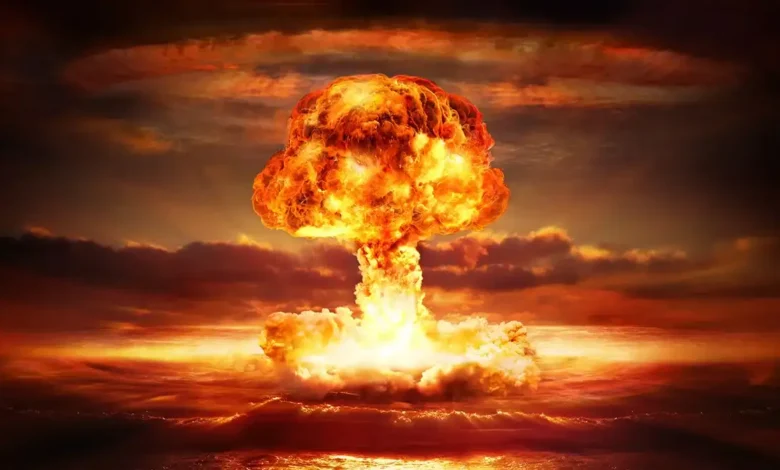
The Nuclear Arms Race: A Legacy of Destruction and Deterrence
The Cold War era, spanning from the end of World War II to the early 1990s, was characterized by an intense rivalry between the United States and the Soviet Union. Central to this conflict was the development and stockpiling of nuclear weapons, which escalated to alarming levels. At its peak, both superpowers possessed approximately 70,000 nuclear warheads, a figure that has since been significantly reduced. However, as of 2024, the remaining arsenals still pose a terrifying threat capable of annihilating human civilization multiple times over.
Historical Context of Nuclear Weapons Development
The origins of nuclear weapons can be traced back to World War II when the United States developed the first atomic bomb under the Manhattan Project. The successful bombings of Hiroshima and Nagasaki in August 1945 not only ended the war but also initiated a nuclear arms race with the Soviet Union. The USSR, feeling threatened by American nuclear capabilities, accelerated its own atomic program, successfully testing its first bomb on August 29, 1949.
The Cold War Arms Race
Throughout the Cold War, both nations engaged in a relentless pursuit to outdo each other in nuclear capabilities. The U.S. and USSR developed various types of nuclear weapons, including hydrogen bombs that were exponentially more powerful than their atomic predecessors. By the mid-1960s, both countries had established a “triad” of delivery systems: intercontinental ballistic missiles (ICBMs), submarine-launched ballistic missiles (SLBMs), and strategic bombers. This diversification ensured that even if one delivery method was neutralized, others would remain available for retaliation. The Cuban Missile Crisis in October 1962 marked a critical juncture in this arms race. The deployment of Soviet missiles in Cuba brought the world to the brink of nuclear war. Both superpowers realized that miscalculations could lead to catastrophic consequences, leading to a period of détente and subsequent arms control agreements.
Reduction in Nuclear Arsenal
With the end of the Cold War, significant strides were made toward reducing nuclear arsenals. Treaties such as START (Strategic Arms Reduction Treaty) led to substantial cuts in warhead numbers and delivery systems. By 2024, it is estimated that the U.S. has approximately 5,500 nuclear warheads, while Russia possesses around 6,375. Despite these reductions, these numbers are still staggering and represent a potential for destruction that could wipe out human civilization several times over.
Current Threat Landscape
As of 2024, even with reduced numbers, the remaining nuclear arsenals pose a grave threat. The existence of thousands of warheads means that any escalation in geopolitical tensions could lead to catastrophic consequences. The doctrine of Mutually Assured Destruction (MAD) continues to underpin nuclear strategy; both sides maintain their arsenals as a deterrent against aggression from one another.
Potential for Catastrophe
The reality is stark: modern nuclear weapons are vastly more powerful than those used during World War II. For instance, the Soviet Union’s Tsar Bomba tested in 1961 had a yield of 58 megatons, making it one of the most powerful bombs ever detonated. Current estimates suggest that even a limited nuclear exchange could result in millions of immediate casualties and long-term environmental devastation due to radioactive fallout.
Conclusion
The legacy of the Cold War’s nuclear arms race is one marked by fear and destruction. Although significant reductions have been made since the peak stockpiles of around 70,000 warheads, the current numbers remain alarmingly high. As we move further into 2024 and beyond, it is crucial for global leaders to prioritize disarmament initiatives and diplomatic efforts to prevent any potential use of these devastating weapons. The specter of nuclear annihilation continues to loom large over humanity; thus, ongoing vigilance and commitment to peace are essential for ensuring a safer future for all.
For the latest updates on News and Current Trends, follow us on X/Twitter here.
Infornex is now on every popular social media. Follow us on your favourite one to never miss an update, click here.
For more Breaking News and Updates, click here.
-
Henry Cavill to Helm Warhammer 40,000 Series on Amazon Prime Video

Dive into the exciting news of Henry Cavill starring and executive producing a Warhammer 40,000 series for Amazon Prime Video.
-
Google’s Quantum Leap: Understanding the Willow Chip and Its Impact on Cryptocurrency

Explore Google’s Willow quantum chip, its error correction breakthroughs, and its potential to revolutionize the security and efficiency of cryptocurrencies in this detailed analysis.
-
The Assad Family and Syria: The Rise and Fall of Bashar al-Assad

Explore the detailed history of the Assad family’s rule in Syria, from Hafez’s iron grip to Bashar’s unexpected rise and dramatic fall. Understand the impact on Syria and the region.



